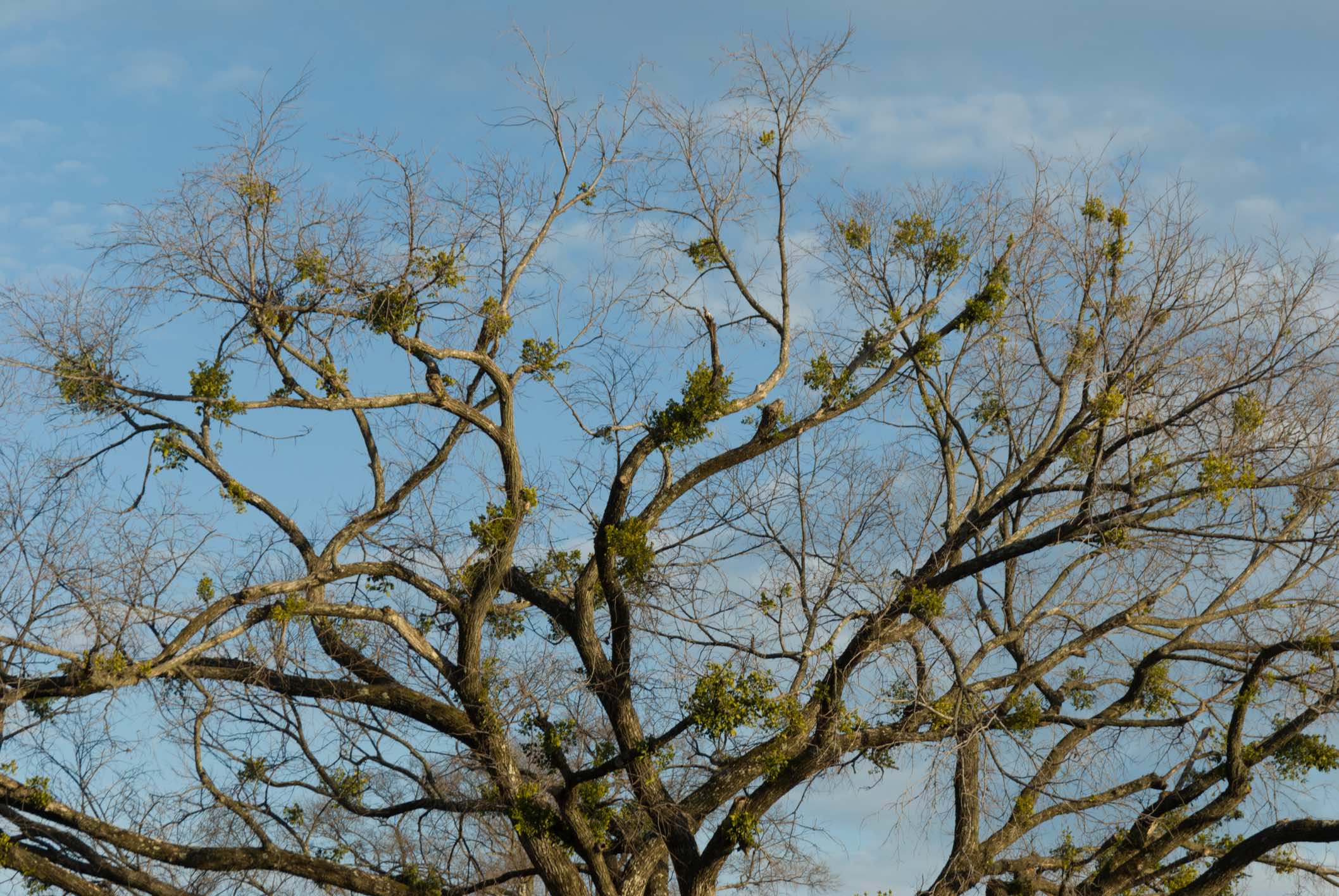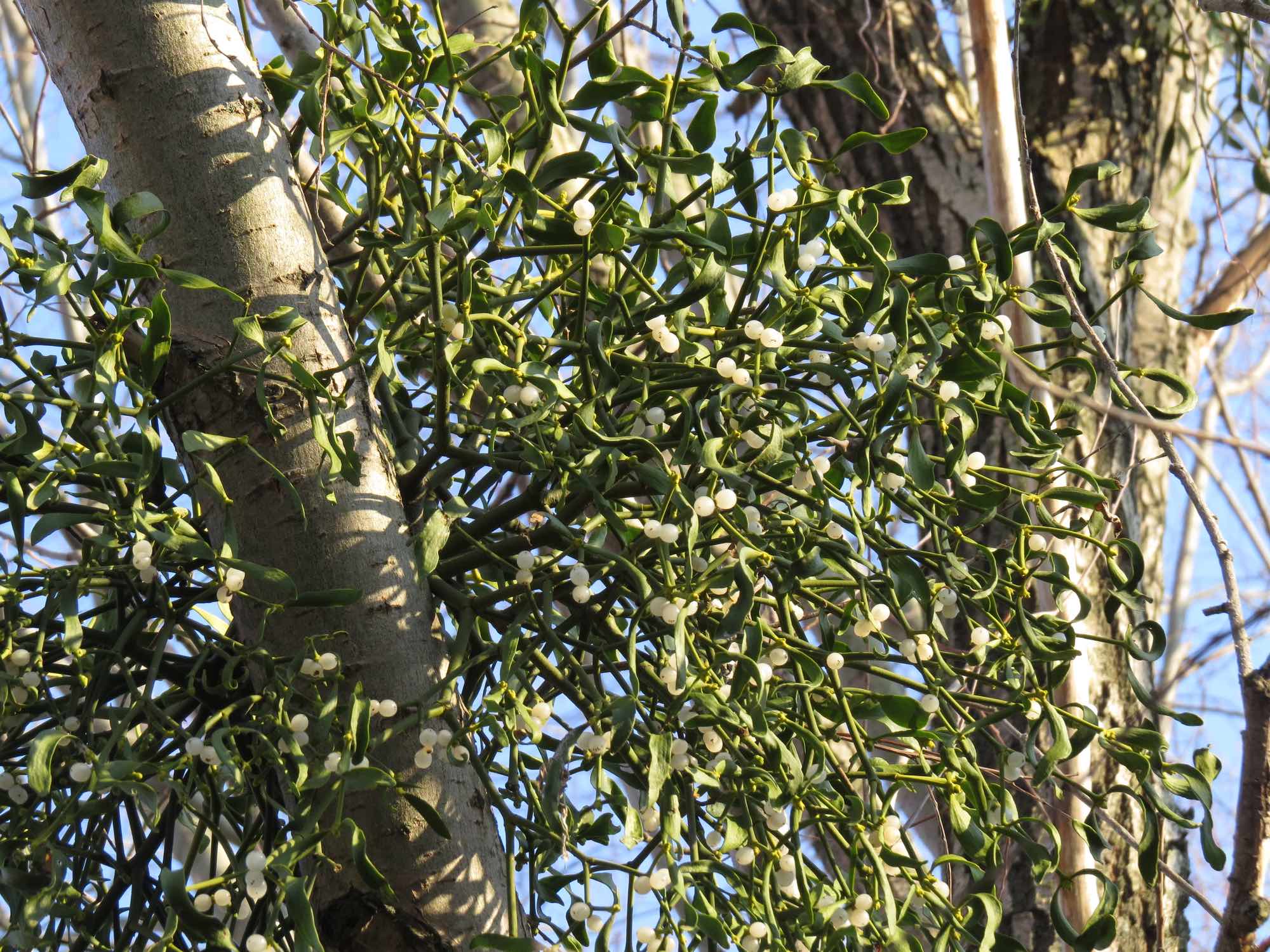Unexpected Plants and Animals of Indiana: American mistletoe
What is green, popular around Christmas and steals things from trees? Other than the Grinch?
While the Grinch lives on top of a mountain, American mistletoe (Phoradendron leucarpum) lives high up on the branches of trees. Its genus, Phoradendron, translates to “tree thief” referencing its hemiparasitic nature.
“Mistletoe contains chlorophyll,” explained urban forestry specialist Lindsey Purcell. “It can generate some energy but the majority of its needs are taken from their host tree.”
The two form a symbiotic relationship. Mistletoe pierces trees with a root like structure called a haustorium that absorbs nutrients and water. Mistletoe creates additional photosynthetic areas for the tree in return, but it typically takes more than it gives. In large amounts, mistletoe can even stunt its host’s growth or kill it.
“American mistletoe tends to grow in colonies on the most favorable areas of trees,” said Purcell. “Younger branches often have healthy tissue and softer bark that is easier for the haustorium to penetrate.”

There are over 1000 species of mistletoe in the world, but those found in America enjoy warm climates.
“Most mistletoe in Indiana is artificial, and for good reasons, since it is inaccessible and dangerous,” said Purcell. “Our region is prohibitive to growth except for extreme southern Indiana. It is too cold here.”
American elm trees near the Ohio River are some of the few reported mistletoe hosts in Indiana. Even if Hoosiers are able to find real mistletoe, decorating with an artificial lookalike is a safer option.
“Mistletoe is highly toxic to pets and humans,” warned Purcell. “Especially the berries, which have the highest concentration of phytochemicals.”
Though some animals cannot stomach the berries, certain birds enjoy them and nest among mistletoe leaves. They also help mistletoe make its way to the treetops. Once birds eat the berries, the digested remnants stick and grow where they roost. This cycle supports the theory that mistletoe’s name stems from the Anglo-Saxon words for dung –“mistel” and twig –“tan”.
Though its romantic reputation may be exaggerated, other aspects may be undersold.
“People have used mistletoe to treat common maladies like headaches and hypertension through the centuries,” explained Purcell. “Now, European mistletoe extracts are being used in trials to help fight cancer.”
While mistletoe might lessen symptoms of high blood pressure, one can only guess if it would have helped the Grinch’s heart, which is, after all, two sizes too small.






